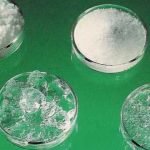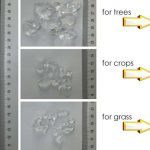
AquaSorb: An Innovative Solution for Water Conservation
Water scarcity and the efficient management of water resources have become pressing global issues in recent times. As the world’s population continues to grow, the demand for clean and usable water rises exponentially. In response to this challenge, scientists and engineers are continually developing innovative technologies to conserve and utilize water more efficiently. One such breakthrough solution is AquaSorb, a cutting-edge water-absorbing material that holds the promise of revolutionizing water conservation practices.
What is AquaSorb?
AquaSorb is an advanced water-absorbing polymer developed with the goal of maximizing water retention in various applications. The material is highly effective at absorbing and retaining water, converting it into a gel-like substance. AquaSorb is composed of superabsorbent polymers, which are capable of absorbing and holding hundreds of times their weight in water. Once hydrated, AquaSorb transforms into a gel-like substance, allowing it to efficiently store water for extended periods.
Applications of AquaSorb
Agriculture: One of the most significant applications of AquaSorb is in agriculture. Water scarcity poses a significant challenge to farmers worldwide, affecting crop yields and food production. AquaSorb can be incorporated into the soil, where it acts as a water reservoir, slowly releasing water to the roots of plants as needed. This efficient water management system helps reduce water consumption, increase crop yields, and promote sustainable agricultural practices.
Landscaping and Horticulture: AquaSorb finds widespread use in landscaping and horticulture to conserve water in gardens, lawns, and green spaces. By mixing AquaSorb into the soil or potting mix, landscapers and gardeners can significantly reduce the frequency of watering while ensuring plants remain hydrated and healthy.
Urban Water Management: In urban areas, where water consumption is high, AquaSorb offers a practical solution to manage water usage. Municipalities can use AquaSorb in parks, street landscaping, and public gardens to decrease water wastage and alleviate the burden on water supply systems.
Erosion Control: AquaSorb is also instrumental in preventing soil erosion. When applied to barren or erodible land, AquaSorb acts as a protective barrier, holding moisture and stabilizing the soil, which reduces erosion caused by wind and water.
Benefits of AquaSorb
Water Conservation: AquaSorb’s unique water-absorbing properties enable significant water conservation. By reducing water consumption in agriculture and landscaping, AquaSorb helps combat water scarcity and preserve precious water resources.
Increased Crop Yield: In agriculture, AquaSorb leads to increased crop yields, as plants receive a steady and controlled water supply. This is particularly beneficial in arid and drought-prone regions where water availability is limited.
Environmental Sustainability: AquaSorb promotes sustainable practices by reducing water wastage, improving soil health, and supporting green initiatives in urban planning.
Cost-Effectiveness: While AquaSorb technology represents an upfront investment, its long-term benefits in terms of water savings and increased productivity make it a cost-effective solution for various industries.
AquaSorb stands as a remarkable innovation in water conservation and management. As water scarcity continues to pose challenges to communities worldwide, AquaSorb offers a practical and sustainable solution to address these concerns. By harnessing the power of AquaSorb, we can create a more water-efficient future, ensure food security, and protect the environment for generations to come. Governments, businesses, and individuals must embrace this technology and incorporate AquaSorb into their water management practices to foster a more sustainable and water-secure world.




